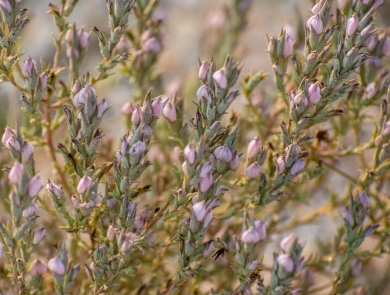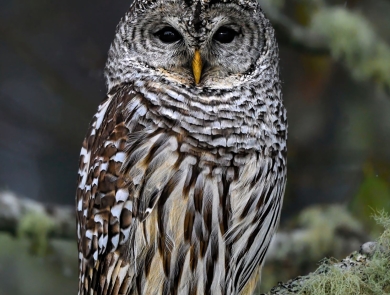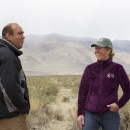About Us
Within the Upper Klamath Basin, conservation efforts are coordinated by the Klamath Falls Fish and Wildlife Office through the voluntary cooperation and participation of a variety of agencies, organizations, private landowners, and individuals. Conservation efforts to maintain and restore the function and health of the Upper Klamath Basin ecosystem are supported and facilitated through USFWS-sponsored activities including;
- Protecting and restoring animals and plants that are in danger of extinction both in the United States and worldwide.
- Providing expert biological advice to other Federal agencies, states, industry, and members of the public concerning the conservation of fish and wildlife habitats that may be affected by development activities.
- Administering Federal grant money to support specific projects carried out by state fish and wildlife agencies.
- Working private landowners and others to conserve and restore habitat on private lands.
What We Do
The focus of the Ecological Service’s staff of the Klamath Falls Fish and Wildlife Office is to carry out the U.S. Fish and Wildlife Service's mission in Klamath and Goose Lake Basins. Our area of responsibility extends to four counties: Klamath and Lake Counties in south-central Oregon and Modoc and Siskiyou Counties in northern California. We accomplish our mission by working collaboratively with the Forest Service, Bureau of Reclamation, Bureau of Land Management and National Park Service to address natural resource issues. Our role is to provide technical and financial assistance to these agencies in the form of Endangered Species Act consultation, watershed assessment and restoration, and technical support with species conservation and recovery.
Our Organization
The Klamath Falls FWO implements several Service programs locally, such as Ecological Services, National Fish Passage Program, and the Fish and Aquatic species programs.
One of the most productive and beneficial programs available to private landowners is the Partners for Fish and Wildlife Program. Through this program, we provide federal funds and assistance to accomplish habitat restoration projects throughout the Basin that will benefit native species, especially those listed under the ESA. We seek to restore natural processes that allow fish and wildlife to thrive. Every project is an opportunity for our restoration specialists to work with landowners while respecting and maintaining their interests and use of property. The Partners Program often works closely with local organizations to maximize the expertise and technical assistance provided to the community.
Types of private land assistance provided by the Partners Program:
• Assessing project sites
• Project planning and design
• Permitting and compliance
• Project implementation
• Grant writing assistance
• Partnership building
• Evaluating project success
• Outreach and education
Additional funding can come from other sources, such as federal, state, and local agencies; non-profit organizations; and for-profit corporations. Landowners are expected to contribute in some ways, such as labor, materials, project design or cash.
Our Species
The Klamath Falls FWO works to conserve sensitive species and the ecosystems on which they depend to ensure viability of species and to minimize or avoid the need for future listings. Where possible, we develop habitat conservation plans that preclude the need for new listings. Additionally, once a species is removed from the Endangered Species List, we continue to monitor the survival success and proliferation of the species to ensure there is not a need for relisting. To accomplish our species management goals, we work closely and in collaboration with a large group of federal, state, and tribal stakeholders as well as private individuals to conduct post-delisting monitoring on these species within the Klamath Basin.
Some of the species that fall under the jurisdiction of this office include: shortnose and Lost River suckers, northern spotted owl, Applegate's milk-vetch, Oregon spotted frog, bull trout, and Pacific fisher.
Projects and Research
Species Conservation: We work to conserve sensitive species and the ecosystems on which they depend to ensure viability of species and to minimize or avoid the need for future listings. Where possible, we develop ecosystem conservation plans that preclude the need for new listings. Additionally, once a species like the bald eagle is removed from the Endangered Species List, we continue to monitor the reproductive success of the species to ensure there is not a need for relisting. Specifically, we are working with a large group of federal, state, tribal and private individuals to conduct post-delisting monitoring on bald eagles locally.
Species Recovery: We work to recover listed species in the Klamath and Goose Lake Basins, with a special focus on species that best represent ecosystems, by developing recovery plans and actions that address the full variety of species and habitats within ecosystems. Species of special interest for the Klamath Falls Fish and Wildlife Office include, but are not limited to: shortnose and Lost River suckers, Modoc suckers, bull trout, northern spotted owls, and Applegate’s milk-vetch.
Get Involved
Partnerships: We develop important partnerships with federal, state, tribal, county and private entities to work toward species conservation and recovery. We provide technical and financial assistance to entities in south-central Oregon and northern California. We implement several habitat conservation programs and provide long range planning advice to county and municipal governments. The office supports and searches out opportunities to develop partnerships with private landowners.
Volunteer: Many of our projects rely on people in the field to implement actions, such as re-vegetation and planting, invasive species invasive species
An invasive species is any plant or animal that has spread or been introduced into a new area where they are, or could, cause harm to the environment, economy, or human, animal, or plant health. Their unwelcome presence can destroy ecosystems and cost millions of dollars.
Learn more about invasive species removal, fisheries research and data collection in Upper Klamath Lake and its tributaries, or conducting community outreach and education programs for the public and local schools. Contact our office for ways in which you can help support our conservation stewardship mission!
Location and Contact Information
- Klamath Falls Fish and Wildlife OfficeView Details1936 California Avenue Klamath Falls, OR 97601































